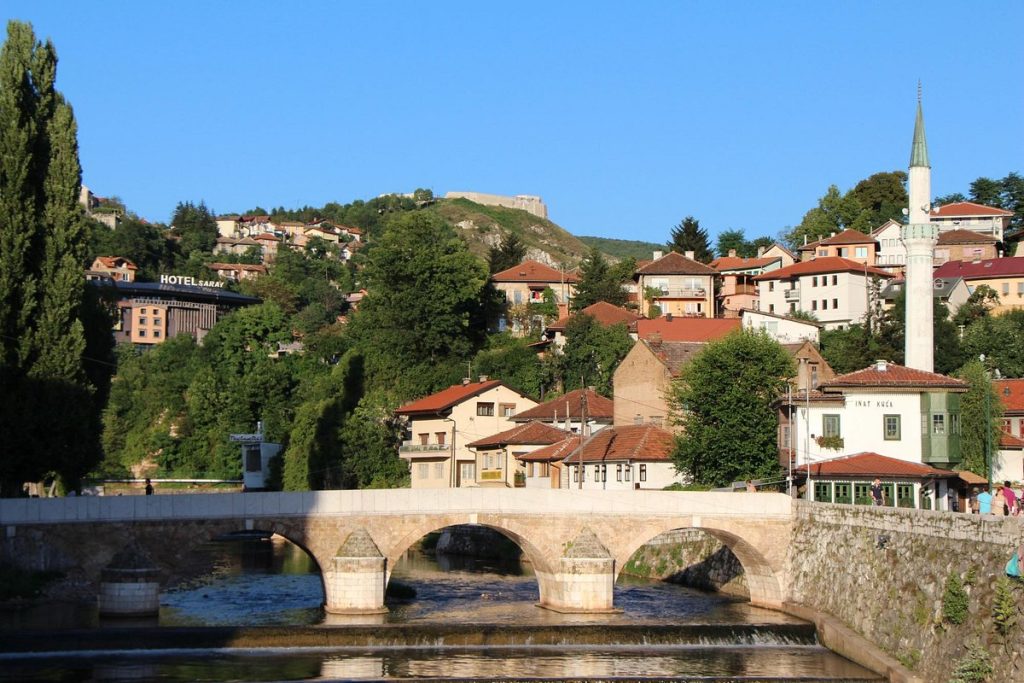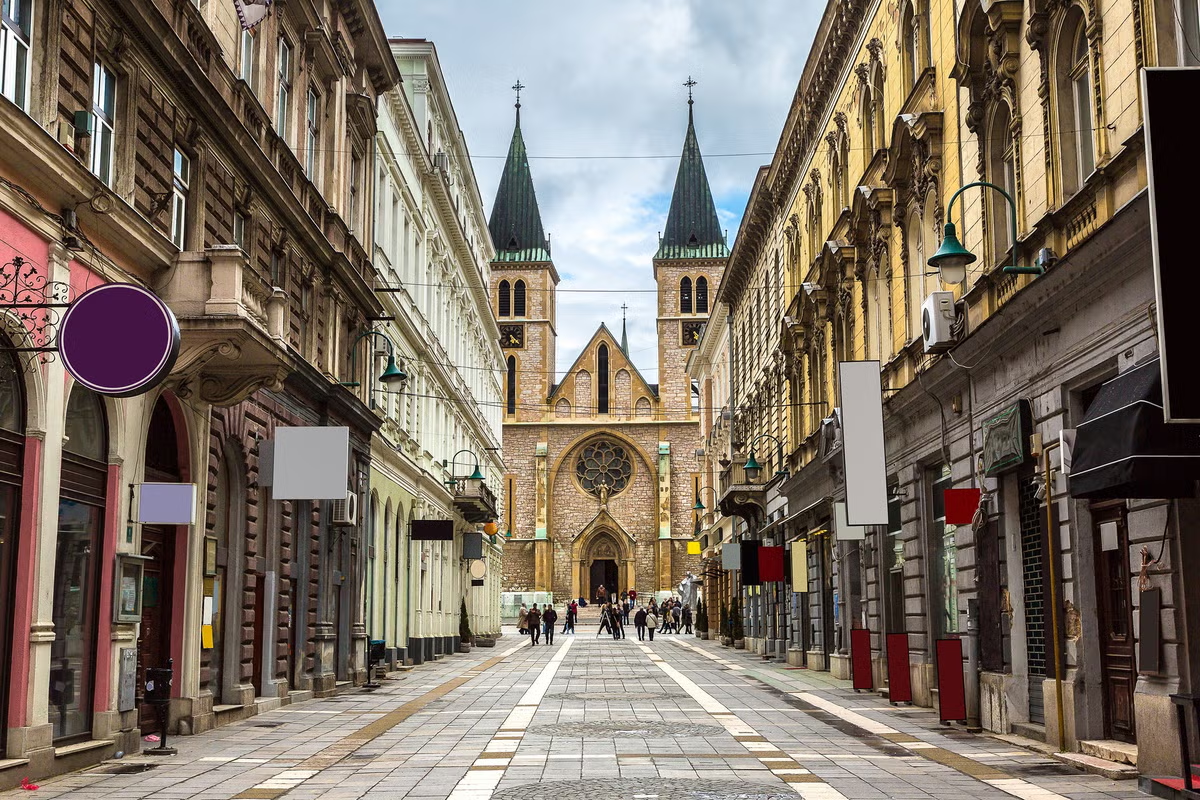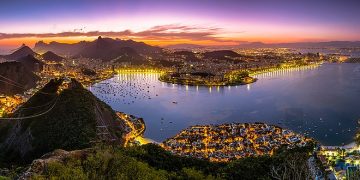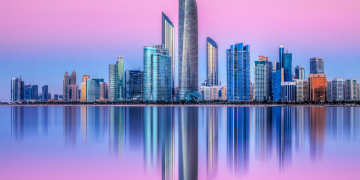A City Marked by Conflict, Now Remembered for Resilience and Beauty
Sarajevo doesn’t announce itself like Paris or New York. There’s no triumphant skyline or iconic landmark that instantly brands the city in a traveler’s mind. Instead, it arrives slowly—through scent, through sound, through the way the sunlight hits the Austro-Hungarian facades that stand beside Ottoman bazaars. In 2025, Sarajevo is captivating a new generation of travel writers not because it has reinvented itself, but because it refuses to erase what came before. This is a city that doesn’t flinch from its scars. It wears them openly, yet never lets them define the full story.
For those who write about place, Sarajevo offers rare texture. You don’t have to look hard to see the outlines of the past—the bullet-pocked walls, the “Sarajevo Roses” filled with red resin where shells once landed, the memorial plaques at the corners of cafés. Yet in the next breath, the city surprises with beauty: a burst of laughter from a sidewalk table, the call to prayer echoing across the Miljacka River, or the golden light at dusk that softens the copper domes of Baščaršija.
It’s this tension between memory and renewal that draws storytellers in. Sarajevo is not an open-air museum or a city frozen in post-war solemnity. It is fully alive—resilient, creative, and layered with complexity. Writers come here not only to report but to reflect. They walk its hills looking for something unvarnished, something that can’t be captured in an itinerary. And what they often find is a sense of quiet honesty—a city that, after all it has endured, still insists on offering beauty.
One Writer’s Walk Through War Museums, Café-Lined Alleys, and Call to Prayer
On her second day in Sarajevo, travel writer Amara walked alone from her guesthouse near Ferhadija Street toward the Gallery 11/07/95. She had read about the museum, dedicated to the Srebrenica genocide, but nothing prepared her for the silence inside. Photographs, testimonies, and looping video installations created a visceral space of memory. As she exited, she found herself unable to speak for several minutes. “The weight of what happened in this country demands more than just empathy,” she later wrote in her journal. “It demands bearing witness.”
From there, she drifted without direction. Sarajevo, she discovered, is a walking city made for wandering. Her route took her through the maze-like alleys of Baščaršija, where copper workers hammered delicate patterns into trays and tourists sipped thick coffee from tiny porcelain cups. The blend of Ottoman, Austro-Hungarian, and modern Yugoslav architecture created a visual rhythm unique to this city—minarets beside domes beside brutalist blocks, all stitched together by hills and tramlines.

She passed the Latin Bridge, where Gavrilo Princip once fired the shots that started World War I, and stopped at a small bookstore tucked into an old arcade. The owner, a man in his sixties, told her how he had hidden manuscripts in the basement during the siege. “People were dying,” he said, “but we still read poetry.”
As dusk approached, she climbed one of the city’s many hills and reached the Yellow Bastion. From this quiet perch, the entire city unfolded—minarets catching the last light, the call to prayer floating over rooftops, and smoke rising from ćevapi grills. It was both ordinary and transcendent. She realized this was the moment she had come for—not something crafted, but something true.
Writers are drawn to these unscripted contrasts. In Sarajevo, sorrow and joy sit side by side. A tunnel museum explains how citizens smuggled food and medicine under siege, while just across town, a modern jazz café pulses with life. Stories are not hard to find here—they bloom from every corner, whispered by stone, smoke, and street.
For Reflective Readers Seeking Stories in Scars
What makes Sarajevo so compelling to modern travel writers is its quiet refusal to simplify. In a world of quick takes and overcurated experiences, this city demands nuance. It speaks in layers. For readers drawn to narrative richness—to places where history is still in conversation with the present—Sarajevo offers both depth and dignity.
The scars are not hidden. The Sniper Alley markers, the graveyards that cascade down the hillsides, the damaged libraries—all stand in plain view. But so too does the city’s response: youth-led art galleries, repurposed factories that now host film festivals, and the open-air concerts that fill the squares every summer.
Writers today are not just covering destinations—they’re exploring meaning. Sarajevo gives them the rare chance to write not just about travel, but about recovery, complexity, and the human capacity to rebuild. In a café once damaged by shellfire, locals now debate politics over plum brandy. In the old Ottoman quarters, young Bosnians revive embroidery and woodworking, blending tradition with innovation. Even the food tells a layered story—Turkish influence in the baklava, Austro-Hungarian flair in the schnitzel, and Balkan warmth in every spoon of begova čorba.
More importantly, Sarajevo embraces its visitors with sincerity. Locals share their stories not to impress but to connect. Travelers don’t just collect photos—they collect conversations. A shopkeeper explains how the tramline once divided life and death. A university student shares what it means to grow up in a post-war generation. A taxi driver points out where he played football during the siege. Every street corner becomes a chapter.
For reflective travelers, especially those with a writer’s eye, Sarajevo is not a backdrop—it is a character. It breathes, remembers, grieves, and hopes. And in 2025, it is welcoming more writers than ever before, not with luxury or spectacle, but with truth.
That’s the draw. Not the allure of escape, but the invitation to engage. In Sarajevo, to travel is to witness—and to witness is, in its own way, to heal.





















